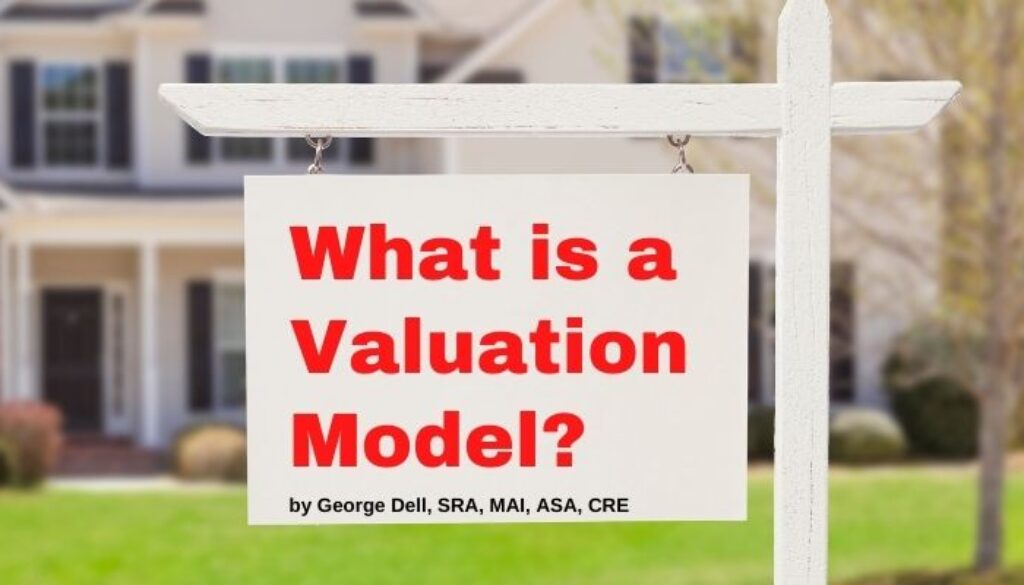A valuation model may not be a model valuation.
What happened with that sentence?
It’s called “equivocation.” Something I learned about in my college English class. What I learned is that a word can be used for different meanings. Equivocation can be used to make language more colorful – to entice, to irritate, or to even explain. Like all things of communication, equivocation can be used for the good, or it can be used to mislead or intentionally confuse. Or even, to prepare a defense for a political or legal position.
“That’s not what I said!” or “That’s not what I actually meant.” Convenient. A type of weasel wording.
What happened in that sentence is that I used the word “model” in two different meanings.
- A “model valuation” is a really good appraisal, worthy of imitating.
- A “valuation model” is a small representation of real-world market behavior.
So, I equivocated to get your attention. If you have read this far – it may have worked. “A good thing!”
A model valuation would be the best possible. It would ask the right question, use the right data, provide a reliability (risk) result, and be reproducible.
A valuation model is what appraisers decide. In The Appraisal of Real Estate, it declares that the entire valuation (appraisal) process is a model. Further, it states that each of the three legacy “approaches to value” (cost, income, comparison) are also models.
There is a good lesson here in a fundamental precept of the scientific method: “reduce a problem (the appraisal model) into smaller parts, analyze those smaller parts (the three approaches), then put back together (synthesize) for the larger question.” This is called “reduction-synthesis.” (Use three ‘approaches’, then reconcile)
In the established appraisal body of knowledge, reduction seems to stop at “the three approaches.” It persists with methods and outdated solutions designed for 1930’s sparse and difficult-to-gather data. The way things were when I was a trainee. Today, in most places, data is plentiful and instantly obtained. Further detailed reduction is critical.
Yet this established body of knowledge says “picking comparables” comes first. Pick five or six ‘best’ comps. Then proceed to analyze the market – Analyze the market based on this subjective (and possibly biased) start. Remember the valuation impossibility theorem: You can’t get objective results from subjective data.
Worse yet, this subjective result enables bias, analytic bias, as well human bias (intentional and unintentional). Please note – I am not saying that appraisals or appraisers are inherently biased. However, we continue to have great pressures. Pressures to “help make the deal” and to bias opinions to enable deal-making, conformity, or even for political reasons. A current movement ignores that appraisers are messengers, the measurers of supply and demand – the carriers of reality – not price-setters! The requested coercion to “higher better value opinions” will have unintended consequences. Not the least of which is that some minorities will be priced out of the market. Price-fixing always has unintended consequences. Mostly bad. Always requiring further governmental ‘action.’
Coercing appraisers to have higher ‘opinions’ in certain areas – would require an exception to ethics, standards, licensing, education, and ignoring public financial risk.
The underlying problem is that appraisal is vulnerable to accusations of bias. If appraisal results are subjective, if appraisals are “only an opinion” – then there is no objective way to defend against such accusations.
The “well-established” way of doing things is embedded in our practices. “Trust me” subjectivity is replete in the established way of doing things. In appraisal practice. In licensing and education. In USPAP requirement to ‘do as peers would do’ and ‘what clients expect.’ And in the resulting regulations of multiple federal agencies, and 54 state and territorial ‘boards’ of greatly varying interest.
Problems can be solved. Bias, inclusivity, diversity, fairness, economic stabilization, and other policy issues can be resolved. Real solutions can surface in an enlightened manner. The manner of attacking the perceived “other” side (rather than focusing on the real issues) can be the downfall of this country, and even humanity on this earth.
A model valuation can resolve and create peace in many quarters. The valuation model must be updated to match today’s complete, instantly available data – by asset analysts who are competent in real estate, and in the critical thinking and visual methods available now.
It must start with regulatory reform.
